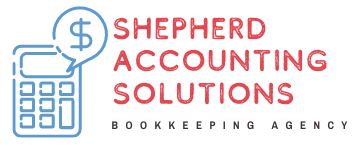HERE ARE SOME TIPS TO HELP GET YOU ON THE RIGHT TRACK.
1. Gather all bank statements and credit card statements for the year. To keep these statements organized and saved in a permanent manner, you can do one of several things:
a. Download a .pdf from the bank and save electronically. Do not save locally on your computer. Be sure to save elsewhere. We really love Google rive or Dropbox which is a free cloud-based storage solution. The nice thing about Google Drive or Dropbox is you can access it from any computer and you can also share access to your files with others. This could be your Amazon business partner, your CPA, or key employees.
b. Some prefer “old school” which is to save a copy in a paper file. There is nothing wrong with this; you just need to do what works best for you, but be sure you do something!
2. If you just started your e-commerce business this year, determine whether or not you want to use accounting software for this year or limp along until January 1 of the upcoming year. Some people in your position may choose to start on January 1 of the upcoming year rather than spend time catching up for this year, especially those who are really busy sourcing inventory and managing their business on other tasks.
3. If you decide to wait until January 1st of the upcoming year to start with accounting software, think big picture about what you need for taxes for this year
4. Review Schedule C to get familiar with it, spend about 10 minutes reading through it. Think of Schedule C as the framework for what you are trying to accomplish.
5. You will need:
a. Income (1099 or report of sales from Amazon, Etsy, PayPal for eBay/Shopify, etc.)
b. Expenses – if you do not report any expenses, you will pay tax on 100% of the income. To support expenses, use bank and credit card statements. The receipts provide the detail of the transactions – do not try to create a listing of expenses from receipts, it’s too hard. Use the statements instead.
c. Go through each transaction and identify what category in the Schedule C each one should be in. Some people do it “old school” and use colored highlighters and pen/paper. Others create a simple excel spreadsheet.
If you start now and just do a few transactions a day, next thing you know, you’ll be caught up! Then, on January 1st of the upcoming year, you can start with accounting software. However, if you want to start now with accounting software, I have found QuickBooks Online is the easiest for most sellers to use after having helped hundreds of sellers learn how to do their own bookkeeping.
A final tip is to be sure and share with your CPA what you did to recreate the current year income and expenses; there may be some fine tuning he/she suggests.
I know it is frustrating and stressful to have to deal with the mountains of paperwork. However, once you get it caught up, it will not be that bad to maintain monthly. Plan to spend about four – six hours per month working on your books. If you spend more time than that, you may want to review your processes to ensure you are working as efficiently as possible.
If you haven’t begun to manage your accounting, or if you’ve fallen behind and don’t know how to get organized, we are happy to assists you.
https://bookme.name/shepherdaccountingsolutions
-end

